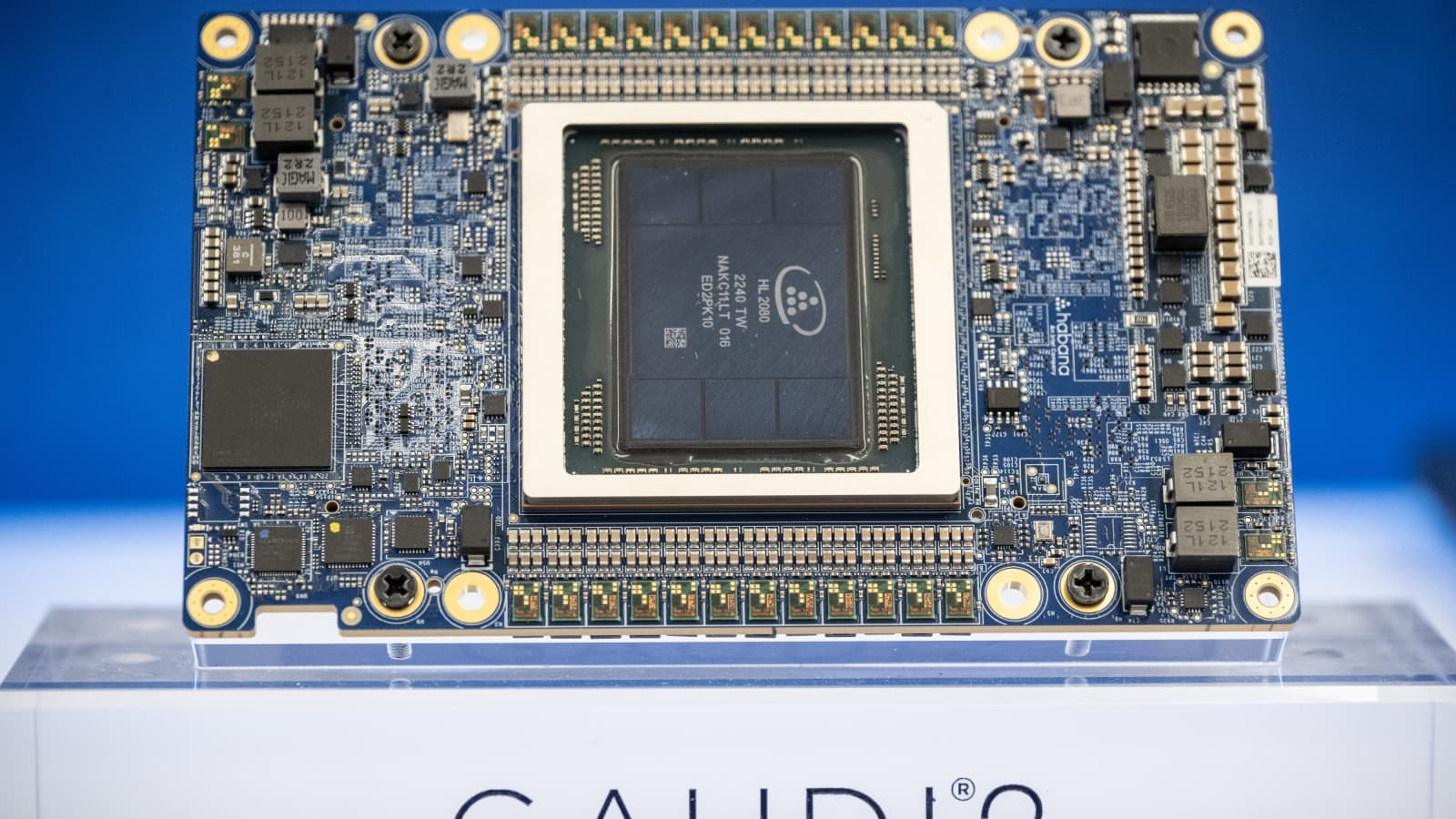
Intel’s latest AI accelerator, the Gaudi 3, is positioned as a strong contender against Nvidia’s well-regarded H100, suggesting a heated competition in the AI hardware market. Gaudi 3’s introduction marks a significant step by Intel to capture a share of the market dominated by Nvidia.
Intel’s Gaudi 3 AI accelerator showcases impressive advancements over its predecessor and Nvidia’s current offerings, potentially reshaping the competitive landscape. Gaudi 3, fabricated using TSMC’s 5nm process, mirrors the sophisticated fabrication process used by Nvidia for its H100, which employs a slightly refined 4N process from the same manufacturer. This places both chips at a similar starting point in terms of manufacturing precision and potential performance capabilities.
Gaudi 3 stands out with its 128GB HBM3e memory, which exceeds the H100’s 80GB HBM3, offering a significant edge in handling larger datasets and more complex AI models, particularly beneficial for AI training workloads. Additionally, Gaudi 3 boasts a four-fold increase in BFloat16 performance over its predecessor, a feature that might give it an advantage in specific AI tasks that benefit from this type of computation.
Intel has also focused on enhancing the networking capabilities of Gaudi 3, doubling the bandwidth compared to its previous generation, which is essential for distributed AI applications and large-scale deployments. Although the H100 holds a slight edge in peak network bandwidth, Gaudi 3’s improvements signify Intel’s commitment to robust communication capabilities.
One of the most critical aspects of Gaudi 3 is its power efficiency, facilitated by the advanced 5nm process. This not only potentially reduces operating costs but also aligns with a growing demand for sustainable AI computing practices.
Despite these enhancements, the H100 remains formidable, boasting leading benchmarks in several areas and a mature ecosystem that includes extensive developer support through Nvidia’s CUDA platform. The challenge for Intel lies not only in matching the technical specifications of the H100 but also in cultivating a similarly strong ecosystem around Gaudi 3.
Intel’s strategy includes forming partnerships with major enterprises and fostering an open platform for AI that could encourage broader adoption of Gaudi 3. Companies like Bosch, IBM, and Google Cloud have been involved in various capacities, integrating or supporting Gaudi’s capabilities in their operations, which could help Intel gain ground.
The AI accelerator market remains a dynamic arena with Nvidia currently leading. However, Intel’s Gaudi 3, with its focus on advanced memory, improved power efficiency, and enhanced networking, represents a significant challenge that could influence future trends in AI hardware development.
While Nvidia’s H100 has established a strong position, Intel’s Gaudi 3 is set to disrupt the market, offering features that promise competitive performance, efficiency, and potentially lower costs. The ultimate impact of Gaudi 3 will depend on its real-world application performance and how quickly developers adopt and optimize their AI solutions around it.